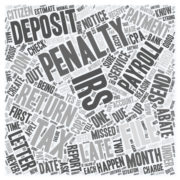Becoming a Smarter Renter
It seems everyone has a tale of a bad rental experience. If you rent anything – a home, a piece of equipment, or a car – here are some hints that can make it a positive experience.
Read all agreements. Read the lease agreement thoroughly prior to signing. Ask for clarification of anything you do not understand. Look for clauses in the agreement that might suggest the property owner has problems with its current tenants. If the agreement seems unfriendly, don’t sign it.
Negotiate up front. Be ready to negotiate your lease terms up front. If anything is unclear in the lease, have it clarified and put in writing. Be very clear about security deposits, first and last month’s rent, and services included in the lease.
Follow the terms. Be the tenant that pays a little early, not the one that always pays late. That way if you ever need a little extra time to pay, you have established the necessary trust to do so.
Proactive disclosure. If you think you will need a temporary exception to part of the lease, try to include it in your upfront negotiations. If this is not possible, consider proactively disclosing the exception to your property owner.
Keep the property clean. This is especially important if you have a pet in your rental property. When landlords come into your home, you will build confidence if the place looks like you treat it as if you owned it. The same is true with rental equipment. Always return it cleaner than you received it.
Know the owner and neighbors. Building a relationship with the property owner and your neighbors helps. If your neighbor has a problem with you, wouldn’t you rather have them come to you than to your landlord? Establishing a good working relationship with a landlord will help you when you need help with a problem in your home or with the equipment you rent.
Leave with a smile. This is especially true for home and vacation rentals. Before you leave, have the property cleaned and hassle-free for the landlord. Request a reference from the landlord for future rentals.










